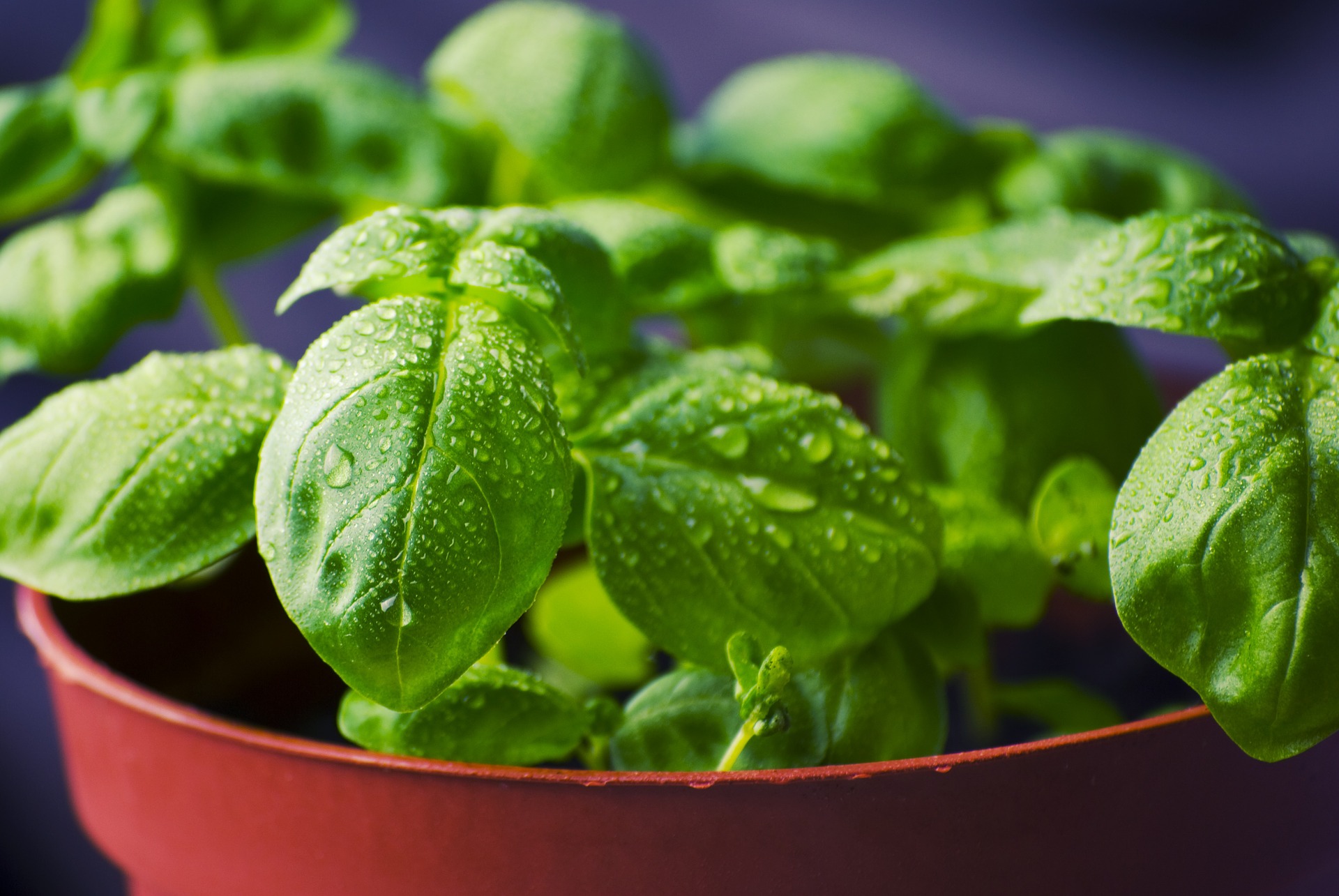The first herb we’re highlighting this summer is one of the most popular: basil!
Different types:
- Sweet basil
- Purple bush basil
- Thai basil
- Sacred basil
Sweet basil is by far the most popular, and what we think of when we picture basil.
Origin:
Basil derives from India, where it was considered sacred, at least in part because of its strong and pleasing fragrance. (True story: One time I was in line at a grocery store buying basil, and the woman behind me said, “I wish there was a perfume of that.”)
Basil is popular in Italian and Mediterranean dishes, as well as US, Asia, and Australian cuisines.
Growing basil:
- Needs soil that drains well.
- Requires frequent watering.
- Likes full sunlight for six hours.
- Needs an artificial light if indoors.
Drying basil:
Harvest long, leafy stems just before flower buds appear. Hang in a dark, warm, well-ventilated place, but not in bunches; the leaves shouldn’t touch each other. When they’re about 20% their original size and crisp – about two weeks – rub them off stems.
Freezing basil:
I have had good luck freezing basil in oil in an ice cube tray. After, transfer to a Ziploc bag. The key here is of course that when you’re ready to use it, hopefully oil is an ingredient in the dish you’re using.
I’ve also read that you can freeze basil for a few weeks by placing it in an inflated grocery store bag, and putting it in the freezer where it won’t be squashed.
Food basil compliments:
- Tomatoes (fresh or cooked)
- Eggplant (cooked or grilled)
- Zucchini/squash (cooked or grilled)
- Spinach (fresh)
- Pasta sauces/gravies
- Vinegars/salad dressings
It also combines well with many other herbs, such as garlic, oregano, or parsley.
Dried basil goes well with poultry dishes when used as a stuffing.
Basil is a ingredient in pesto sauce and bruschetta.
Some final tips:
Some people maintain you should never cut basil with a knife, only tear, to keep color and flavor; this is a myth.
Large leaves can be stored in the fridge in a wide-mouthed shallow jar with salt sprinkled over, and covered with olive oil.
Basil best enhances cooked foods – especially vegetable- or legume/bean-based soups – when added during the last half hour of cooking.
A big thank you to The Spice and Herb Bible for information provided here, and will continue to provide in the remaining herbs we’ll cover this summer.
